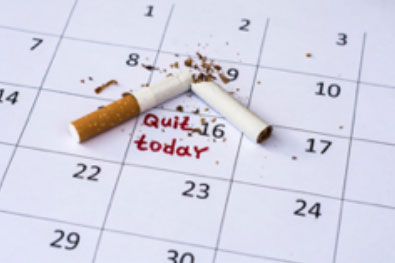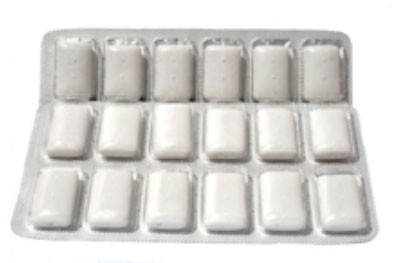
Deciding that you are now ready to quit smoking is only half the battle. Knowing where to start on your path can help you to take the leap. We have found some effective ways for you to stop smoking.
Quitting smoking is not a single event that happens in a day; it is a journey.
To quit smoking, you not only need to alter your behavior and cope with the withdrawal symptoms experienced from cutting out nicotine, but you also need to find other ways to manage your moods.
With the right game plan, you can break free from nicotine addiction and kick the habit for good. Here are five ways to tackle smoking cessation.
1. Prepare for Quit Day
Once you have decided to stop smoking, you are ready to set a Quit Day. Pick a day that is not too far in the future, but which gives you enough time to prepare.
Choose your Quit Day and prepare to stop smoking altogether on that day.
There are several ways to stop smoking, but ultimately, you need to decide whether you are going to:
- Quit abruptly, or continue smoking right up until your quit date and then stop.
- Quit gradually, or reduce your cigarette intake slowly until your quit date and then stop. Research that compared abrupt quitting with reducing smoking found that neither produced superior quit rates over the other, so choose the method that best suits you.
Here are some tips recommended by the American Cancer Society to help you to prepare for your Quit Day:
- Tell friends, family, and co-workers about your quit date.
- Throw away all cigarettes and ashtrays.
- Decide whether you are going to go "cold turkey" or use nicotine replacement therapy (NRT) or other medicines.
- If you plan to attend a stop-smoking group, sign up now.
- Stock up on oral substitutes, such as sugar free hard candy, sugarless gum, vegetable sticks, coffee stirrers, straws, and toothpicks.
- Set up a support system, such as a family member that has successfully quit and is happy to help you.
- Ask friends and family who smoke to not smoke around you.
- If you have tried to quit before, think about what worked and what did not. Daily activities - such as getting up in the morning, finishing a meal or taking a coffee break, can often trigger your urge to smoke a cigarette. But breaking the association between the trigger and smoking is a good way to help you to fight the urge to smoke.
On your Quit Day:
- Do not smoke at all.
- Stay busy.
- Begin use of your NRT if you have chosen to use one.
- Attend a stop-smoking group or follow a self-help plan.
- Drink more water.
- Drink less or no alcohol.
- Avoid individuals who are smoking.
- Avoid situations wherein you have a strong urge to smoke.
The four D’s can often help you to move beyond your urge to light up -
- Delay - until the craving passes. The urge to smoke often comes and goes within 3 to 5 minutes.
- Deep breathe - Breathe in slowly through your nose for a count of three and exhale through your mouth for a count of three. Visualize your lungs filling with fresh air.
- Drink water - sip by sip to beat the craving.
- Do something else - to distract yourself. Perhaps go for a walk.

2. Use NRTs (Nicotine Replacement Therapy)
Going cold turkey, or quitting smoking without the help of NRT, medication, or therapy, is a popular way to give up smoking. However, only around 6 percent of these quit attempts are successful. It is easy to underestimate how powerful nicotine dependence really is.
NRTs can help you to fight the withdrawal symptoms associated with quitting smoking.
NRT can reduce the cravings and withdrawal symptoms you experience that may hinder your attempt to give up smoking.
NRTs are designed to wean your body off cigarettes and supply you with a controlled dose of nicotine while sparing you from exposure to other chemicals found in tobacco.
Health Canada have approved three types of NRT:
- skin patches
- chewing gum
- lozenges
If you have decided to go down the NRT route, discuss your dose with a healthcare professional before you quit smoking. The goal is to end your addiction to nicotine altogether, and not just to quit tobacco.

3. Consider non-nicotine medications
The FDA and Health Canada have approved several non-nicotine containing drugs to help smokers quit.
Talk to your health care provider for different options that would be good for you.



